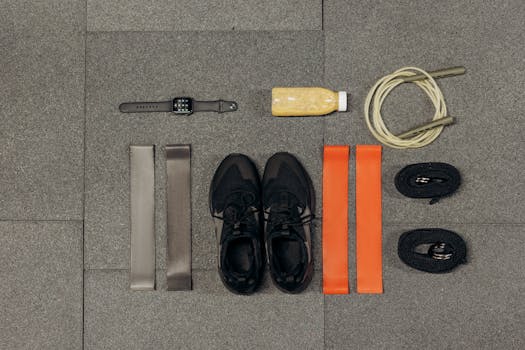
Introduction

Strength training at home is an excellent way for beginners to improve their fitness, build muscle, and enhance overall health. This guide provides essential tips and techniques to help you get started on your strength training journey.
Understanding Strength Training

Strength training involves the use of resistance to induce muscular contraction, which builds strength, endurance, and size of skeletal muscles. It can be performed using various equipment or even body weight.
The Benefits of Strength Training
- Increases muscle strength and tone
- Improves metabolic rate
- Enhances bone density
- Boosts mental health
- Promotes better posture
Getting Started with Strength Training at Home

Before starting any workout routine, it’s important to have a plan. Here are some steps to help you begin:
1. Set Clear Goals
Identify what you want to achieve through strength training, whether it’s weight loss, muscle gain, or overall fitness.
2. Create a Workout Space
Designate a space in your home where you can work out comfortably without distractions.
3. Choose the Right Equipment
Invest in basic equipment like dumbbells, resistance bands, or kettlebells. Alternatively, bodyweight exercises can also be highly effective.
Essential Strength Training Exercises

Here are some fundamental exercises to incorporate into your routine:
Squats
Squats target your quads, hamstrings, and glutes. Stand with feet shoulder-width apart, lower your body as if sitting back into a chair, then return to standing.
Push-Ups
Push-ups work your chest, shoulders, and triceps. Start in a plank position and lower your body until your chest nearly touches the floor, then push back up.
Planks
Planks strengthen your core, back, and shoulders. Hold a push-up position for as long as possible while maintaining a straight line from head to heels.
Creating a Weekly Strength Training Schedule

For optimal results, aim for at least two to three strength training sessions per week. Here’s a simple weekly schedule:
Monday: Full Body
Include squats, push-ups, and lunges.
Wednesday: Upper Body
Focus on push-ups, tricep dips, and resistance band exercises.
Friday: Lower Body
Perform squats, deadlifts, and calf raises.
Safety Tips for Home Strength Training

To prevent injuries while strength training at home, follow these safety tips:
Warm-Up
Always start with a warm-up to prepare your muscles and joints.
Maintain Proper Form
Focus on the correct technique to avoid injuries.
Listen to Your Body
Do not push through pain. Rest and recover as needed.
Conclusion

Strength training at home is accessible and beneficial for beginners. By following the tips outlined in this guide, you can start your fitness journey with confidence and achieve your goals.






